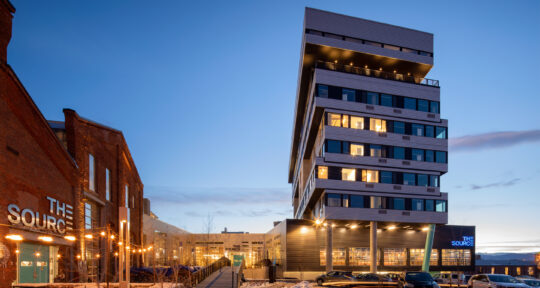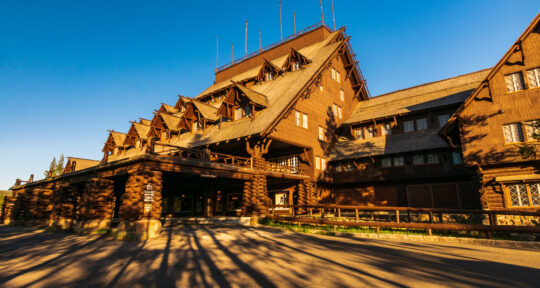Half a century ago, Cook County Hospital was treating more than 100,000 patients each year. Its emergency room was one of the busiest in the world and its operating rooms were among the first to try risky, innovative surgical techniques. Known as “Chicago’s Ellis Island,” the hospital welcomed patients from around the world, and no one was refused treatment.
Today, visitors to Chicago can check into the sprawling old Cook County Hospital thanks to a massive rehabilitation and redevelopment that has transformed the 1914 Beaux-Arts building. The vibrant complex now includes two Hyatt hotels, a food hall featuring Chicago cuisine, and an in-hotel museum that highlights the hospital’s history.
My great grandparents, who immigrated to Chicago from Italy in the early 20th century and lived in the surrounding West Side neighborhood, were likely patients here at some point. Their daughter, my grandma Helen, used to sneak into the emergency room waiting area with her friends as a teenager to watch the medical drama play out first hand.
As I wander the luxurious rooms of this once-bustling community-based hospital, I can’t help but imagine all the pain, suffering, and healing that took place here over the course of its more than 150 years of service. Treating patients with diseases such as cholera, smallpox, scarlet fever, and tuberculosis, the hospital was a place of pain, despair, and death—but also hope.
Chicago’s first permanent hospital
Cook County Hospital dates back to 1832, when Chicago was a swampy, lakeside trading post with 400 inhabitants. The proliferation of cholera called for a temporary wooden structure—built to isolate indigent patients—and care was provided by students from Rush Medical School. Cook County Hospital’s first permanent building was built by the city of Chicago after the deadly cholera outbreaks of 1849 and 1854, and went on to serve as a groundbreaking teaching hospital until it became an army hospital during the Civil War.
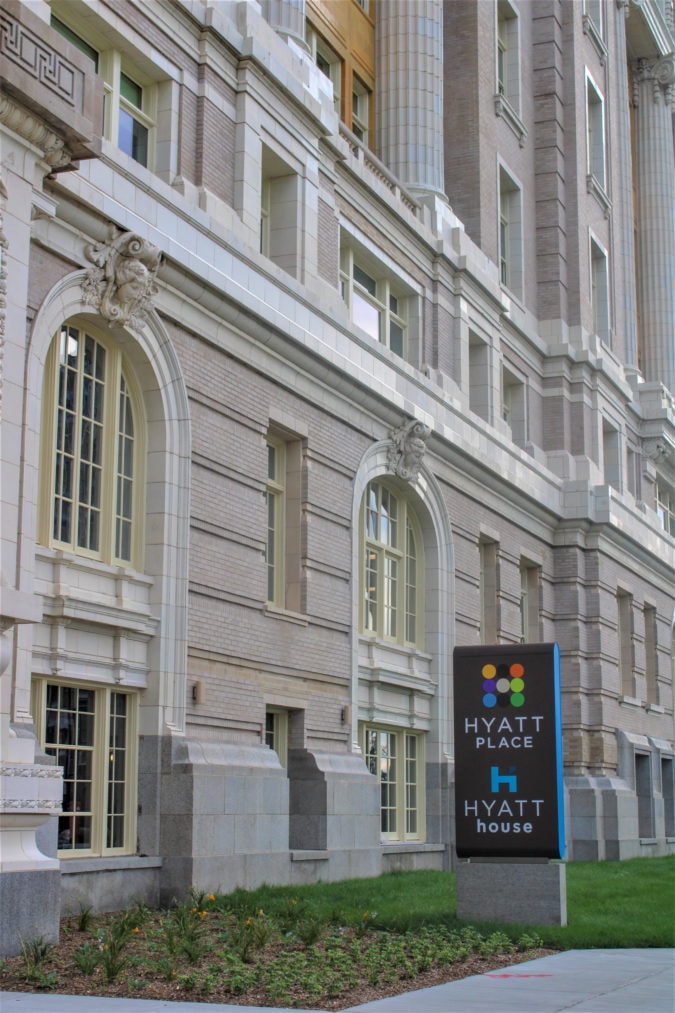
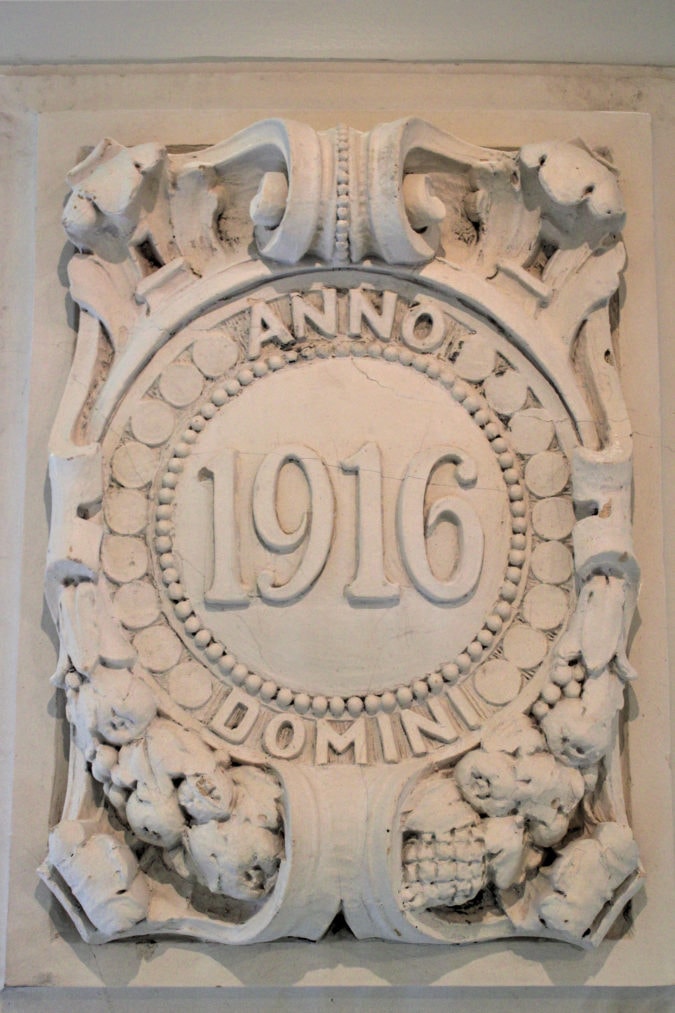
In 1916, when Chicago’s population had swelled to more than 2 million, the new hospital building was completed along two city blocks on Chicago’s Near West Side. It boasted the world’s first blood bank (opened in 1937) and hosted the first modern trauma center. Post World War II, the hospital, plagued with overcrowding and a shortage of nurses, desperately needed modernization.
Still, its reputation managed to grow far and wide: Fans of the television series ER might recall the building’s facade, which was featured as the fictional “County General,” and in 1996, Princess Diana toured the hospital’s pioneering AIDS ward. In 2002, the new John H. Stroger, Jr. Hospital of Cook County opened to the public, and the adjacent, old hospital building was closed and neglected for nearly two decades. Vandals moved in and it appeared that the historic hospital would fall victim to the wrecking ball.
A landmark, restored
For years, the fate of the building and its elegant facade stood in limbo. Preservation Chicago and Landmarks Illinois lobbied Cook County officials to save the historic building, located right off Route 66, and it was added to the list of “Most Endangered Historic Places in Illinois” in 2001.
Enter the Civic Health Development Group, a consortium of developers and builders that envisioned a rehab and reuse of not only the 106-year-old former hospital building, but also the 13 surrounding, mostly vacant, acres of the Illinois Medical District.
“What everyone said can’t be done can finally be done,” said developer John Murphy at the project’s launch in 2018. “We’re going to turn a dilapidated building into the first phase of what could become a $1 billion project. Once we reset this old building, I think you’ll see explosive development in this area.”
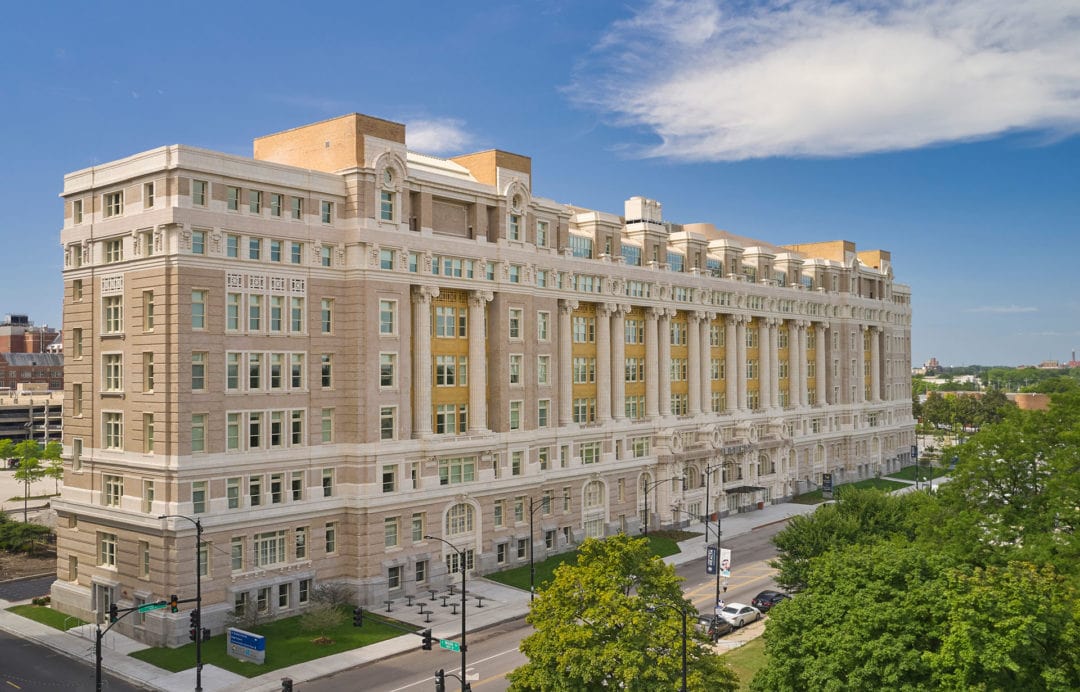
The project took more than two years to complete and topped $1 billion—with more than $18 million dedicated to restoring the facade alone, including meticulously replacing windows, restoring 4,160 terracotta pieces, and polishing the three-story Ionic columns.
“Cook County Hospital is far more than an artfully designed building,” says Bonnie McDonald, president and CEO of Landmarks Illinois. “It’s a symbol of the promise of civil society and governance. No one was turned away from care—a model of equity we can draw from today. The staff’s ingenuity in creating the country’s first blood bank and early treatment of HIV/AIDS patients are some of the extraordinary human stories this place continues to tell.”
A wide expanse of green across from the hospital is set to be transformed into a garden. At its center stands a statue of Louis Pasteur, the French scientist who dedicated his career to disease prevention and treatment. The statue is engraved with his words, which poignantly encapsulate Cook County Hospital’s mission: “One doesn’t ask of one who suffers: What is your country and what is your religion? One merely says, You suffer, This is enough for me. You belong to me and I shall help you.”
From hospital to hotel
Inside the former hospital, wards once brimming with patients have been divided into 210 spacious suites and guest rooms of Hyatt Place and Hyatt House Chicago Medical/University. The latter is an extended-stay style hotel with rooms that resemble mini studio apartments. The sweeping, 11-foot-wide hospital-style corridors, designed to accommodate patient transfers via rolling beds, remain intact. So do the original staircases, their edges elegantly worn from the footsteps of countless patients; the stone terrazzo floors have been polished to their original, 1914 shine. Large windows welcome the sunlight, and boast sweeping views of the United Center and downtown’s magnificent skyscrapers.
The lobby is lit by mod chandeliers and overseen by a vaulted ceiling, offering excellent lounge-style meeting spaces that invite guests to linger a little longer. One big clue reminds guests that this space welcomed patients before tourists: The symbol of Hygeia—a snake wrapped around a chalice, representing the Greek goddess of health—is repeated in the pattern of the carpeting.
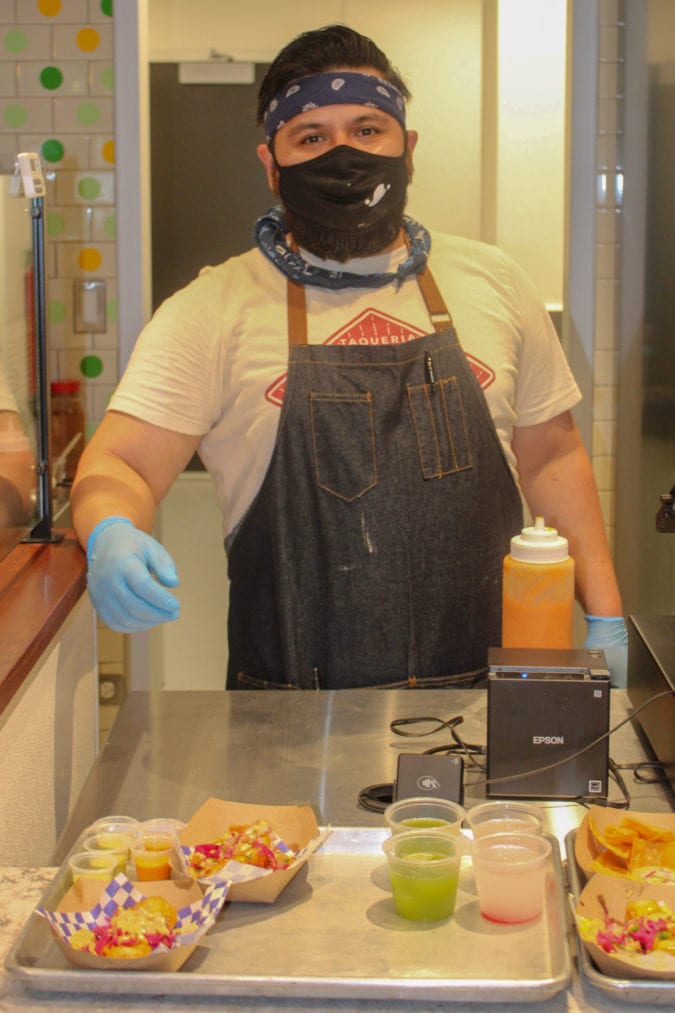
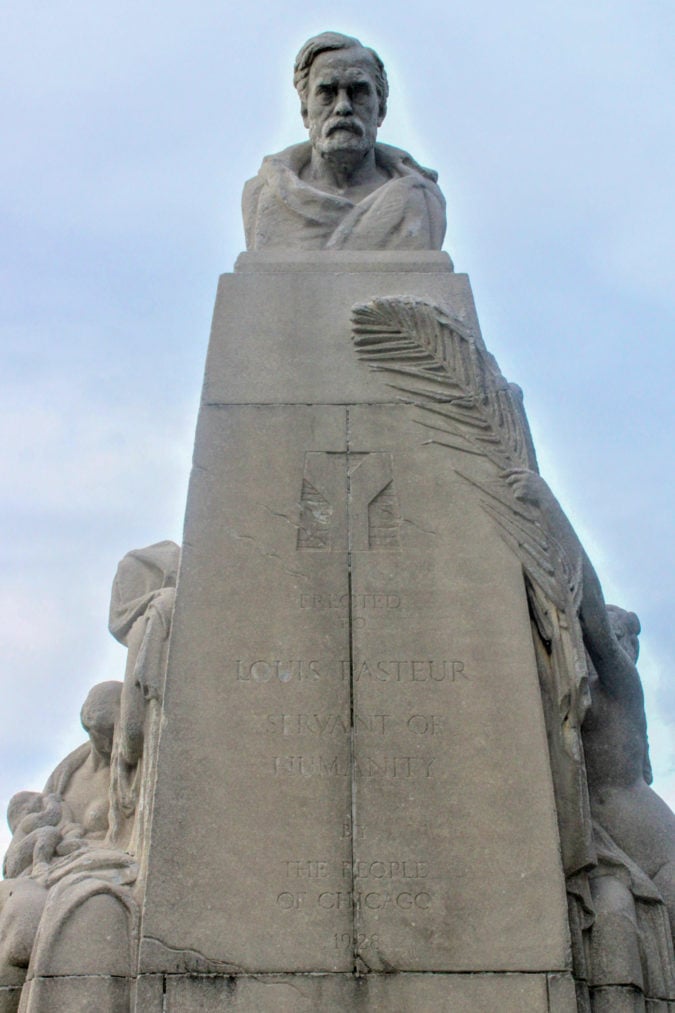
The hospital cafeteria has been replaced with a food hall fashioned to resemble a 19th-century pharmacy. Dr. Murphy’s Food Hall is named for Dr. John B. Murphy, a pioneering surgeon who taught at the hospital in the late 1800s.
The dazzling food hall is a far cry from the original hospital cafeteria, which earned a less-than-glowing mention in Upton Sinclair’s The Jungle: “Jurgis spent his Christmas in this hospital, and it was the pleasantest Christmas he had had in America. Every year there were scandals and investigations in this institution, the newspapers charging that doctors were allowed to try fantastic experiments upon the patients; but Jurgis knew nothing of this—his only complaint was that they used to feed him upon tinned meat, which no man who had ever worked in Packingtown would feed to his dog.”
Surgery as performance art
All of the building’s interior was gutted except the old surgical theater on the eighth floor. In the hospital’s early years, surgery was almost a kind of performance art. The surgical theater, where doctors would perform medical procedures, looks strikingly similar to an ancient Greek theater. Though it’s still closed to the public as it awaits eventual restoration into a hotel meeting space, I was able to take a peek at its ascending rows of seats centered around a stage, where medical students and other surgeons would watch surgical breakthroughs in progress.
Today, the space is covered in graffiti after years of neglect, making for a spooky scene lit only by the partially boarded up skylights above. These were necessary in the 1900s when the artificial lighting of the era wasn’t able to shed enough light on the tricky procedures in progress.
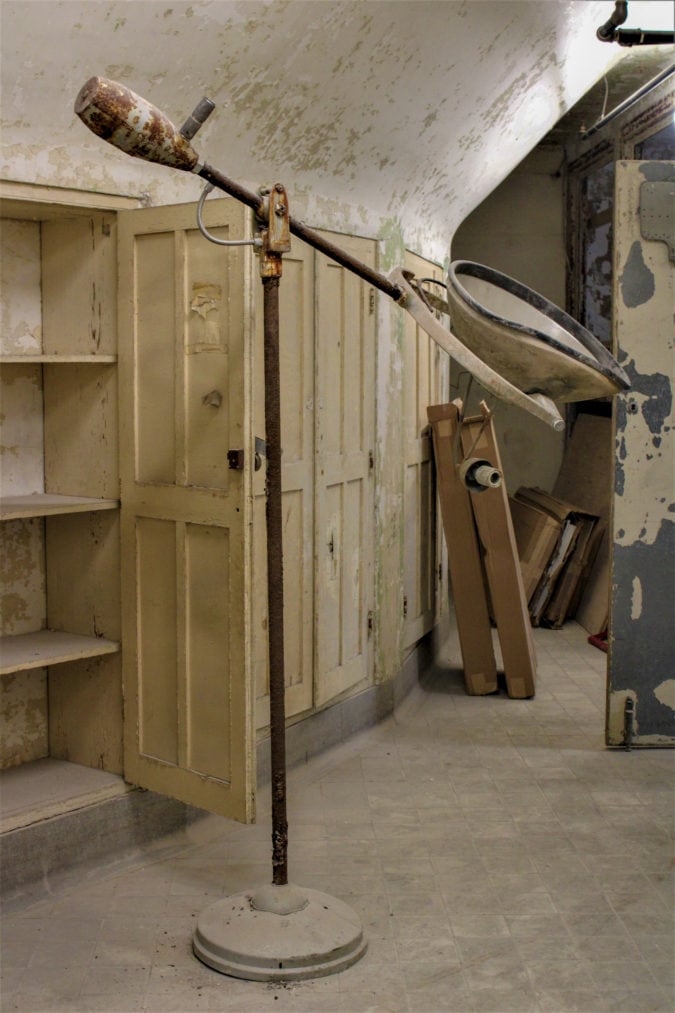
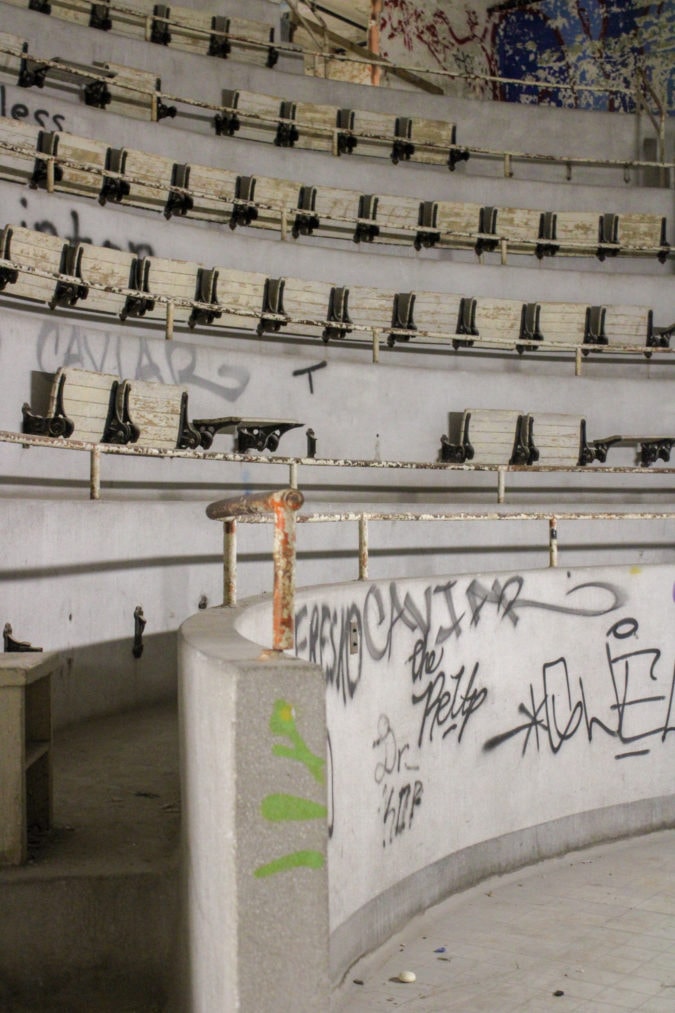
The in-house museum brings the history of the former hospital alive through an incredible collection of artifacts. A permanent exhibit titled Care & Hope for All: Cook County Hospital highlights both the building’s stunning architecture and its history—from its first incarnation in the 1830s to the role it played in the epidemics and turbulent social transformations that unfolded outside and inside its wards.
The museum includes dozens of evocative photos, videos, and a variety of objects from the past century, including vintage medical instruments and assorted vials of medications from the early 20th century.
It’s also a good reminder that Chicago never loses hope; that the city has pulled through even the deadliest of epidemics. The 1918 influenza outbreak alone led to more than 8,000 deaths, and one of the museum’s artifacts is a timely reminder that epidemics are nothing new. A brick from the 1920 tuberculosis outbreak is impressed with a warning: “Don’t Spit on Sidewalk.”

